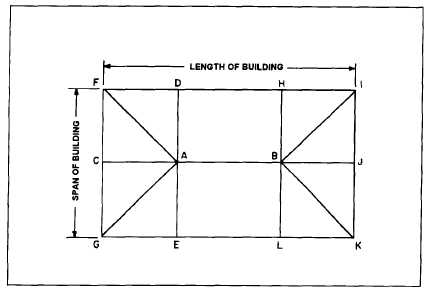Figure 2-30.—Equal-pitch hip roof framing diagram.
HIP
Most hip roofs are equal pitch. This means the angle
of slope on the roof end or ends is the same as the angle
of slope on the sides. Unequal-pitch hip roofs do exist,
but they are quite rare. They also require special layout
methods. The unit length rafter table on the framing
square applies only to equal-pitch hip roofs. The next
paragraphs discuss an equal-pitch hip roof.
The length of a hip rafter, like the length of a
common rafter, is calculated on the basis of bridge
measure multiplied by the total run (half span). Any of
the methods previously described for a common rafter
may be used, although some of the dimensions for a hip
rafter are different.
Figure 2-30 shows part of a roof framing diagram
for an equal-pitch hip roof. A roof framing diagram
may be included among the working drawings; if not,
you should lay one out for yourself. Determine what
scale will be used, and lay out all framing members
to scale. Lay the building lines out first. You can find
the span and the length of the building on the working
drawings. Then, draw a horizontal line along the
center of the span.
In an equal-pitch hip roof framing diagram, the lines
indicating the hip rafters (AF, AG, BI, and BK in figure
2-30) form 45° angles with the building lines. Draw
these lines at 45°, as shown. The points where they meet
the center line are the theoretical ends of the ridge piece.
The ridge-end common rafters AC, AD, AE, BH, BJ,
and BL join the ridge at the same points.
A line indicating a rafter in the roof framing diagram
is equal in length to the total run of the rafter it
represents. You can see from the diagram that the total
run of a hip rafter (represented by lines AF-AG-BI-BK)
is the hypotenuse of a right triangle with the altitude and
base equal to the total run of a common rafter. You know
the total run of a common rafter: It is one-half the span,
or one-half the width of the building. Knowing this, you
can find the total run of a hip rafter by applying the
Pythagorean theorem.
Let’s suppose, for example, that the span of the
building is 30 feet. Then, one-half the span, which is the
same as the total run of a common rafter, is 15 feet.
Applying the Pythagorean theorem, the total run of a hip
rafter is:
What is the total rise? Since a hip rafter joins the
ridge at the same height as a common rafter, the total
rise for a hip rafter is the same as the total rise for a
common rafter. You know how to figure the total rise of
a common rafter. Assume that this roof has a unit of run
of 12 and a unit of rise of 8. Since the total run of a
common rafter in the roof is 15 feet, the total rise of
common rafter is the value of x in the proportional
equation 12:8::15:x, or 10 feet.
2-20


